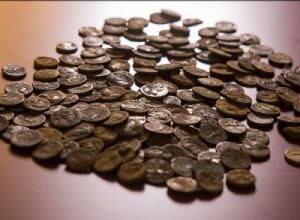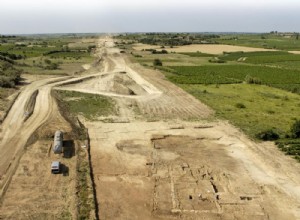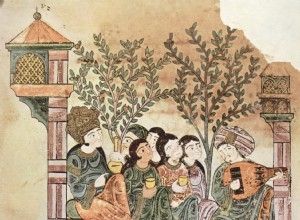A monetary hoard of more than a hundred coins has just been unearthed on the site of Romes most severe defeat, in Germania. A disaster that put an end to the policy of imperial expansion beyond the Rhine. 1st century CE Roman silver denarii discovered at the site of the Battle of Teutoburg, German




